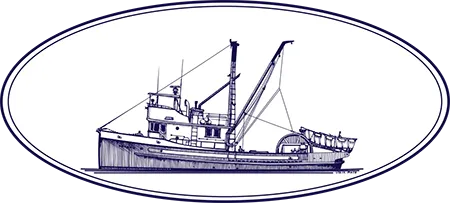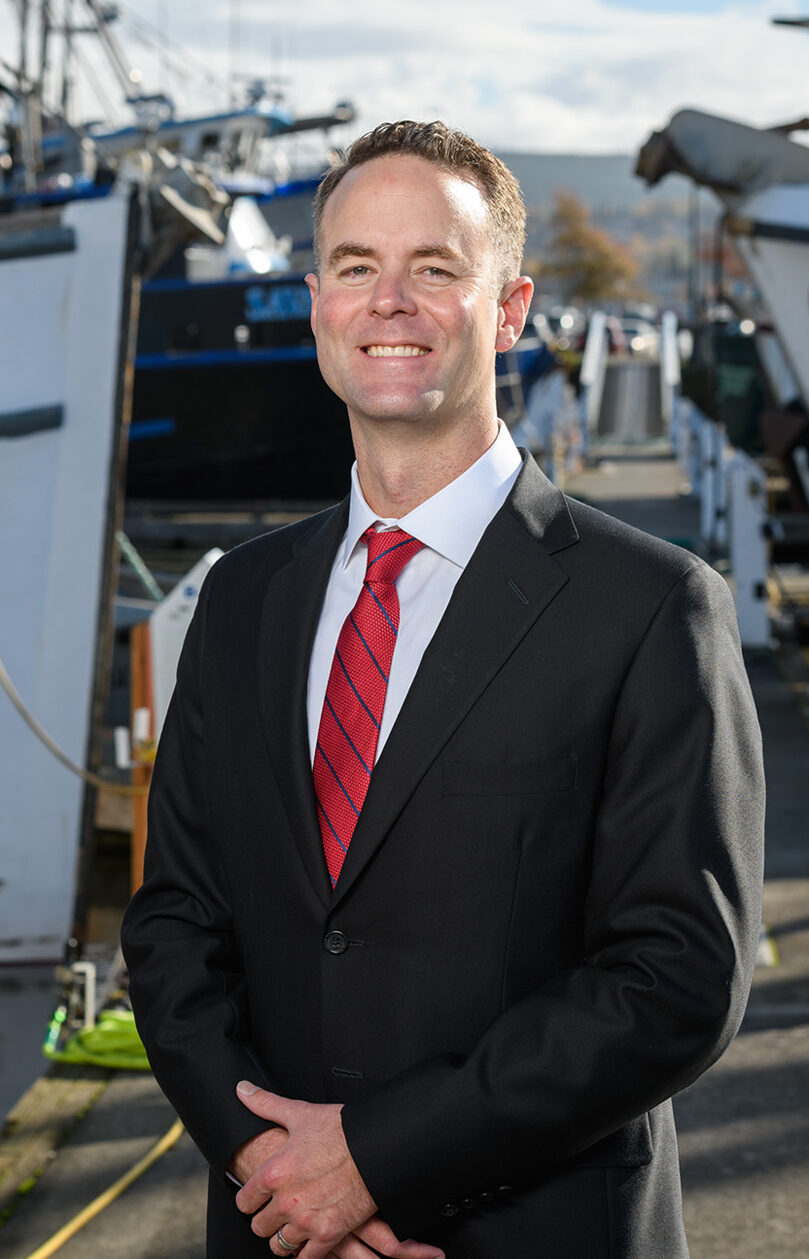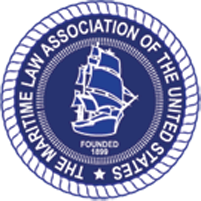One of the most common causes of civil claims in maritime law is unseaworthiness. It is the responsibility of the owner to provide a vessel that is reasonably fit for its purpose, though they are not obligated to provide an accident-free workplace. Failure to provide a vessel that is at least reasonably seaworthy is considered negligent under maritime law.
A seaman who is injured due to the unseaworthiness of a vessel has cause to bring civil action against the owner for compensation to recover for their damages. As maritime law can be complicated, it is recommended you hire an experienced admiralty attorney if you are wishing to pursue compensation for a maritime injury.
Unseaworthiness Lawyers
Serving as a seaman on a vessel can lead to offshore injuries. In many instances, seaman suffer severe injuries because the vessel is unseaworthy. For example, the ship or vessel may be unseaworthy if it is not reasonably fit for its intended purpose or does not allow a seaman to successfully perform their tasks. At BoatLaw, LLP (formerly Anderson Carey Williams & Neidzwski), we have decades of experience helping families and injured seaman recover for their damages.
With a dedication to the favorable resolution of maritime injury claims, the maritime injury lawyers of BoatLaw, LLP will fight for fair compensation in your case, even if it means facing a large maritime employer or insurance company. We have offices in Seattle and Bellingham, Washington; Portland, Oregon; and San Francisco, California.
To schedule your free consultation to see what BoatLaw, LLP can do for your unseaworthiness claim, call 1-800-262-8529 today.
Information Center
- What Is Unseaworthiness?
- Unseaworthiness and Death on the High Seas Act (DOHSA)
- What Types of Injuries or Accidents Are Covered in an Unseaworthiness Claim?
- Which Workers Can File an Unseaworthiness Claim?
- Who Could Be Liable to a Victim for an Injury in an Unseaworthiness Claim?
- What Are the Potential Damages for an Unseaworthiness Claim?
- Can Families File a Wrongful Death Unseaworthiness Claim?
- What Is the Role of Insurance Companies as It Relates to an Unseaworthiness Claim?
- What Are Common Defenses Against an Unseaworthiness Claim?
- How Does an Unseaworthiness Claim Compare to Other Jones Act Claims?
- Time Limits for Filing an Unseaworthiness Claim
- What Steps Should a Victim Take Immediately After an Injury to Protect Their Rights in an Unseaworthiness Claim?
- What Legal Options Does a Victim Have If an Unseaworthiness Claim Is Denied?
- How Does a Maritime Injury Lawyer Help a Victim in an Unseaworthiness Claim?
- Additional Resources
- Hire an Unseaworthiness Lawyer
What Is Unseaworthiness?
Unseaworthiness refers to when a vessel is not adequately equipped or maintained to ensure the safety and well-being of its crew during its intended operations. This includes many issues, ranging from the failure to conduct regular maintenance, the presence of defective or outdated equipment, to the lack of necessary safety guidelines and training for crew members. Moreover, it involves an evaluation of the vessel’s overall ability to perform safely under the conditions it was designed for, including its structural integrity and the functionality of its navigation and emergency response systems. Vessel owners are legally obligated to maintain a safe environment.
What Is an Unseaworthiness Claim
A claim of unseaworthiness under general maritime laws refers to a legal action that a maritime worker can take if they believe their injury was caused by unsafe conditions on a vessel. The point of these claims is not the employer’s direct negligence (carelessness) but the state of the vessel itself. If the working environment aboard the vessel is considered unsafe, leading to an injury, the worker may have grounds for a claim of unseaworthiness.
Unseaworthiness and Death on the High Seas Act (DOHSA)
Employment as an able-bodied seaman, fisherman, or other maritime-based occupation is highly dangerous and, unfortunately, can result in the death of a loved one. When a death due to vessel unseaworthiness occurs in international waters or beyond three nautical miles from the shore, the unseaworthiness claim must be brought under 46 U.S.C. § 30301, known as the Death on the High Seas Act (“DOHSA”).
DOHSA states that when the death of an individual is caused by a wrongful act, neglect, or default more than three miles from the United States shoreline, civil action compensating that person’s spouse, parent, child, or dependent relative may take place. This includes cases of unseaworthiness against a vessel owner. A wrongful death action through DOHSA may only be for economic damages, such as medical expenses prior to death, funeral expenses, and loss of financial support. Non-economic damages, such as loss of consortium and punitive damages, are excluded.
The test of unseaworthiness is the same for wrongful death at sea as it is for the general maritime law. The failure of the vessel owner or shipowner to provide a vessel and gear that are reasonably fit for their intended purpose is considered unseaworthiness, and potentially grounds for action. If any of the following factors contributed to your loved one’s death at sea, you may have a case for unseaworthiness under DOHSA:
- Incompetent crew or lack of adequate crew training
- Crewmembers who are assaultive and violent
- Inadequate number of crewmembers
- Lack of appropriate safety measures or equipment
- Failure of equipment or appurtenance under proper and expected use
- Improper placement of otherwise seaworthy equipment
The terms equipment and appurtenance do not necessarily indicate everything on the vessel, but their definition is also not limited to ship-type equipment such as a winch, rope, ladder, pad-eye, or shackle. An experienced maritime injury attorney can help you determine if your loved one’s death on the high seas was due to unseaworthiness. Then, your qualified maritime injury attorney can establish a case at court to fight for the damages you and your family need and deserve.
What Types of Injuries or Accidents Are Covered in an Unseaworthiness Claim?
Claims of unseaworthiness cover injuries or accidents that occur because of a boat not being adequately fit for its intended purpose. This includes slips and falls because of wet or oily surfaces, injuries from malfunctioning equipment or machinery, accidents caused by inadequate training of the crew, and harm from improperly stored cargo. It’s not limited to physical injuries alone but also includes situations where the lack of safety measures or emergency preparedness directly leads to an accident or injury. Importantly, if the condition of the ship or its equipment contributes to a worker’s injury, that worker can pursue a claim for unseaworthiness.
Which Workers Can File an Unseaworthiness Claim?
A claim of unseaworthiness can be filed by seamen who are injured because of the unsafe condition of a vessel. A seaman is someone who spends a significant portion of their time working aboard a ship or vessel that is in navigation. This includes a wide range of maritime workers, like deckhands, engineers, fishermen, and others who contribute to the vessel’s function or mission. The main factor is that the individual must be working on a vessel that is afloat, operational, capable of moving, and on navigable waters.
Who Could Be Liable to a Victim for an Injury in an Unseaworthiness Claim?
In an unseaworthiness claim, the vessel’s owner is typically liable to the victim for injuries. This liability arises from the owner’s responsibility to ensure that the vessel is safe and fit for its intended use. If the condition of the ship or its equipment is unsafe and leads to an injury, the owner may be held responsible for failing to maintain a safe environment. This includes ensuring that the ship is properly equipped and that all safety measures are in place and functioning.
What Are the Potential Damages for an Unseaworthiness Claim?
In an unseaworthiness claim, the scope of potential damages is broad, reflecting the impact an injury can have on a maritime worker’s life.
Medical Expenses – these cover all healthcare costs arising from the injury, including hospital stays, surgeries, medications, and any specialized treatment like physiotherapy. Compensation aims to ensure that the injured worker is not burdened by the financial impact of their medical care, providing a foundation for their physical recovery.
Lost Wages – injuries often mean time away from work, leading to lost earnings. Compensation for lost wages addresses this immediate financial impact, ensuring workers are not left struggling to meet their daily expenses. This component is crucial for maintaining financial stability during the recovery period.
Pain and Suffering – this aspect of damages acknowledges the non-economic impact of injuries, such as physical pain, emotional distress, and the overall decrease in quality of life. Quantifying pain and suffering in monetary terms is complex.
Future Medical Care – many injuries require ongoing treatment, rehabilitation, or may result in long-term disabilities. Compensation for future medical care anticipates these needs, providing for medical expenses that are likely to arise after the initial recovery period.
The principle of comparative negligence applies which means the compensation can be adjusted based on the worker’s amount of fault. For instance, if a worker is found to be 20% responsible for their injury, their damages could be reduced by 20%. This ensures that even if workers contribute to their accidents, they can still receive support for their recovery.
Can Families File a Wrongful Death Unseaworthiness Claim?
In wrongful death cases stemming from unseaworthiness, families can seek a range of compensations that reflect both the financial and emotional devastation of their loss. This includes recovery for lost future earnings, ensuring the deceased’s financial contributions to their family are recognized. Medical and funeral expenses provide immediate financial relief, while damages for loss of consortium and companionship acknowledge the emotional void left behind. Even if the deceased had partial fault, compensation could still be obtained, adjusted according to their degree of responsibility.
What Is the Role of Insurance Companies as It Relates to an Unseaworthiness Claim?
Insurance companies play a significant role in claims of unseaworthiness, as they often provide the coverage that compensates injured maritime workers. When a claim is filed, the vessel owner’s insurance company becomes involved in evaluating the claim, negotiating settlements, and potentially defending the owner in court. The insurer’s goal is to manage the financial risk associated with claims, aiming to resolve them in a cost-effective manner while ensuring that legitimate claims are compensated. This process involves assessments of injury reports, vessel conditions, and legal arguments regarding unseaworthiness to determine the validity and value of a claim.
What Are Common Defenses Against an Unseaworthiness Claim?
Common defenses against an unseaworthiness claim include arguing that the vessel was seaworthy and that any injuries did not result from the vessel’s condition. Owners might demonstrate that they complied with safety regulations, maintained the vessel properly, and provided adequate training to the crew. Another defense is asserting that the injury was caused by the worker’s own negligence or by an unavoidable accident. Additionally, vessel owners may challenge the individual’s status as a seaman, as the law only protects certain maritime workers.
How Does an Unseaworthiness Claim Compare to Other Jones Act Claims?
Unseaworthiness claims and Jones Act negligence claims, alongside maintenance and cure claims under general maritime law, share common ground yet serve separate purposes in protecting maritime workers. Unseaworthiness focuses on the vessel’s condition, asserting that injuries were due to the ship not being seaworthy or fit for its intended use. This is independent of the employer’s direct actions or negligence.
On the other hand, Jones Act claims target employer negligence directly, requiring proof that the employer’s actions or inactions contributed to the injury. Maintenance and cure claims guarantee seafarers the right to medical treatment and living expenses until they’ve reached maximum medical improvement, regardless of fault. These legal claims can intersect, allowing workers to pursue multiple claims at the same time.
Time Limits for Filing an Unseaworthiness Claim
Yes, there are time limits for filing an unseaworthiness claim. Specifically, an injured maritime worker has three years from the date of the injury to file a lawsuit. This time frame is important because, if a claim is not filed within this period, the worker may lose the right to seek compensation.
What Steps Should a Victim Take Immediately After an Injury to Protect Their Rights in an Unseaworthiness Claim?
- Seek Medical Attention: First and foremost, attend to any injuries by getting medical help immediately.
- Report the Accident: Notify your supervisor or the shipowner about the accident as soon as you can.
- Document the Scene: Take the time to document the accident scene and collect contact information from any witnesses.
- Keep Medical Records: Preserve all medical records and receipts connected to the injury. These documents are crucial for any potential legal claims.
Additionally, obtain maintenance records of the vessel that may show a history of neglect or repair. This includes Logs and reports filed with the employer about the incident and any prior complaints regarding the vessel’s condition. Gathering this documentation helps show the link between the vessel’s unseaworthy state and the worker’s injuries, strengthening the claim.
What Legal Options Does a Victim Have If an Unseaworthiness Claim Is Denied?
If an unseaworthiness claim is denied, you have several legal options. You can request a reconsideration of the decision and provide additional evidence or arguments to support your claim. If the claim is still denied, you have the right to file a lawsuit in court, where the case can be heard by a judge or jury. During this legal process, the victim can present evidence and witness testimony to prove the unseaworthy conditions of the vessel and the link to their injuries.
How Does a Maritime Injury Lawyer Help a Victim in an Unseaworthiness Claim?
A maritime injury lawyer plays a major role in helping a victim with an unseaworthiness claim. Initially, the lawyer will assess the claim’s validity by reviewing the evidence and the circumstances of the injury. They will collect and organize necessary documentation, including medical records, witness statements, and evidence of unsafe conditions on the vessel.
The lawyer will then file the claim on behalf of the victim, ensuring that it meets all legal requirements and deadlines. Throughout the process, they negotiate with the employer or their insurance company to reach a fair settlement. If a settlement cannot be reached, the lawyer will represent the victim in court, presenting the case to a judge or jury.
Beyond these legal actions, the lawyer provides valuable guidance to the victim on how to proceed at each step of the claim process, including advising on communications with the employer and insurance companies. They also help the victim understand the potential value of their claim, taking into account factors like medical expenses, lost wages, and pain and suffering. Ultimately, a maritime injury lawyer is an advocate for the victim’s rights and interests, working to obtain the best possible outcome for their unseaworthiness claim.
Additional Resources
Model Civil Jury Instructions in Unseaworthiness Claims
The United States Courts for the Ninth Circuit provides model civil jury instructions for unseaworthiness claims. This resource clarifies the responsibilities of vessel owners to ensure their vessels are seaworthy. It explains that a vessel must be reasonably fit for its intended purpose and operated by a competent crew.
Injured Worker Page – Department of Labor
This site is designed for individuals and injured workers under the Longshore Program. It offers information about the program and services, including how to file a claim for work-related injuries or death benefits, available benefits, and contact information for assistance with claims. It aims to guide injured workers through the process of seeking compensation and support, ensuring they understand their rights and the steps to take following an injury.
Hire an Unseaworthiness Lawyer
A shipowner or vessel owner has an absolute duty and obligation to provide a seaman with a seaworthy vessel and crew. If the vessel’s equipment or crew are inadequate for the purpose for which it was intended for, and a seaman’s injuries were caused because of the inadequacy, then the vessel is unseaworthy, and the shipowner can be held responsible for the damages the seaman sustained.
If you work on a vessel and have suffered injuries because of the vessel’s unseaworthiness, seek legal representation. Having an experienced maritime lawyer on your side can help you determine your options, file your claim, and much more. At BoatLaw, LLP, we make sure to help our clients every step of the way so that they can have a smooth recovery.
If you have suffered an injury on a vessel due to unseaworthiness in Alaska, California, Oregon, Washington, or the related waters, contact the passionate and skilled maritime injury attorneys of BOATLAW, LLP with offices in Portland, Seattle, Bellingham, and San Francisco. They will fight for the maximum compensation you deserve, whether it means obtaining a fair settlement or going to trial. Your first consultation is free, so call 1-800-262-8529 today and schedule yours.











